A little over a year ago, I shared some images on Design Observer from the site of Sarah Bryan, a University of North Carolina-trained folklorist who has worked in the field of folklife documentation for more than a decade.
While that post on Folk Funeria focused on the typography of Southern gravestones, this post is focused on unusual gravestones that have been embellished with rocks, marbles, glass, pottery shards, and seashells. Some belive that the decoration of a grave with detritus is symbolic of the body destroyed by death. Others that the materials safeguard the grave.
In the United States, traditions such as these are usually associated with African-American burial sites, where the tradition of gravestone decoration can be traced to various African tribal burial customs. The placement, for example, of shells is possibly a reference to the BaKongo belief that a seashell might be a vessel of immortality. The use of reflective materials like glass and mirrors were sometimes used to represent the mirror image of life in death. The practice made its way to America in the colonial era, introduced by slaves, and though many of these customs have been lost to time and no longer are practiced, it continued in some places well into the second half of the twentieth century.
If you would like to learn more about African-American burial practices, John Vlach's book The Afro-American Tradition in Decorative Arts goes into quite some detail. Good online primers on the subject can be found here ;and here.
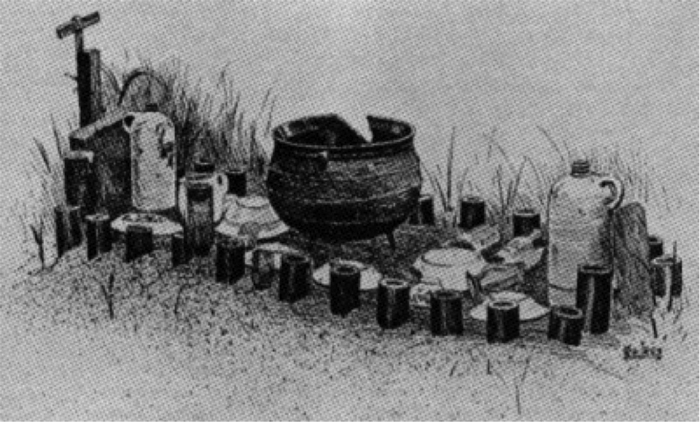
Unknown artist, A Congo chieftain’s grave, ca. 1830, West Central Africa.
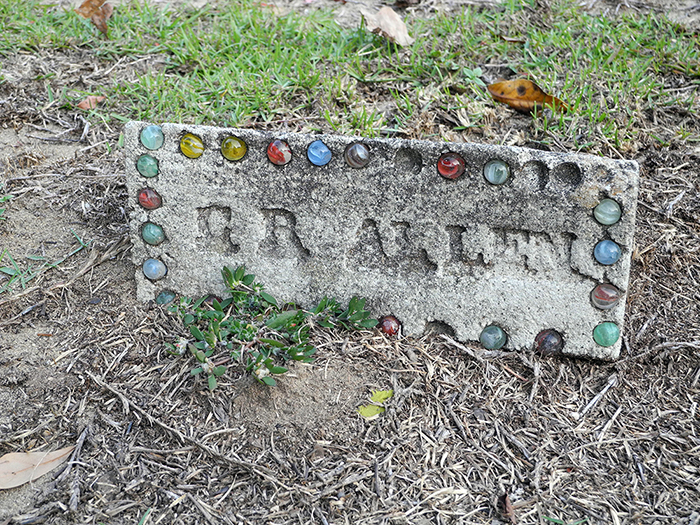
Mt. Zion AME Zion Church/Flea Hill Church, Eastover, Cumberland County, North Carolina. This gravestone and the two below are typical of whimsical markers made by Issiah McEachin, an African-American gravestone maker. © Sarah Bryan
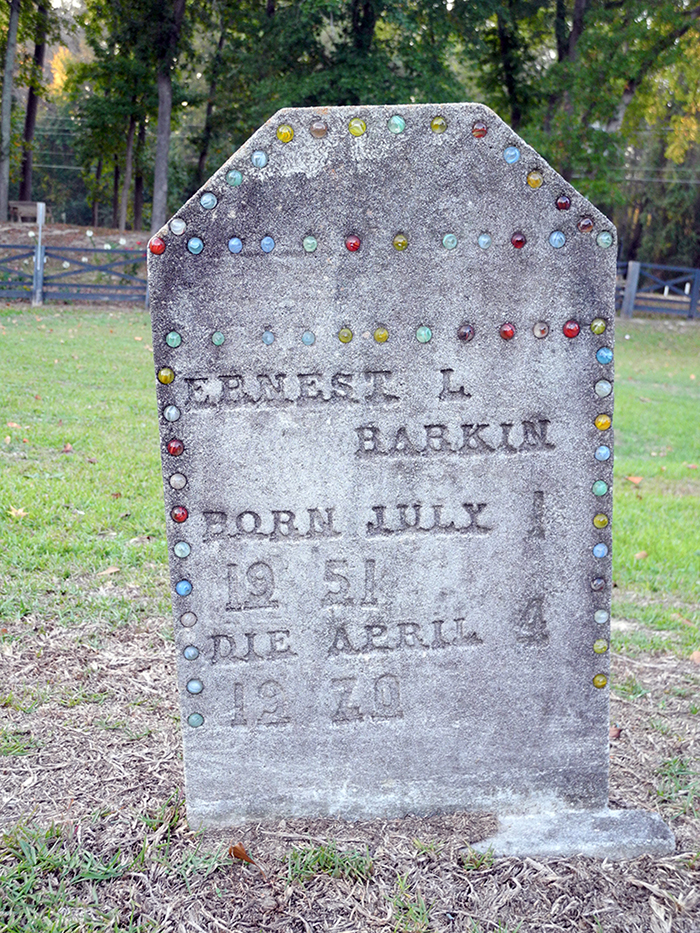
Mt. Zion AME Zion Church/Flea Hill Church, Eastover, Cumberland County, North Carolina. © Sarah Bryan
 Mt. Zion AME Zion Church/Flea Hill Church, Eastover, Cumberland County, North Carolina. © Sarah Bryan
Mt. Zion AME Zion Church/Flea Hill Church, Eastover, Cumberland County, North Carolina. © Sarah Bryan
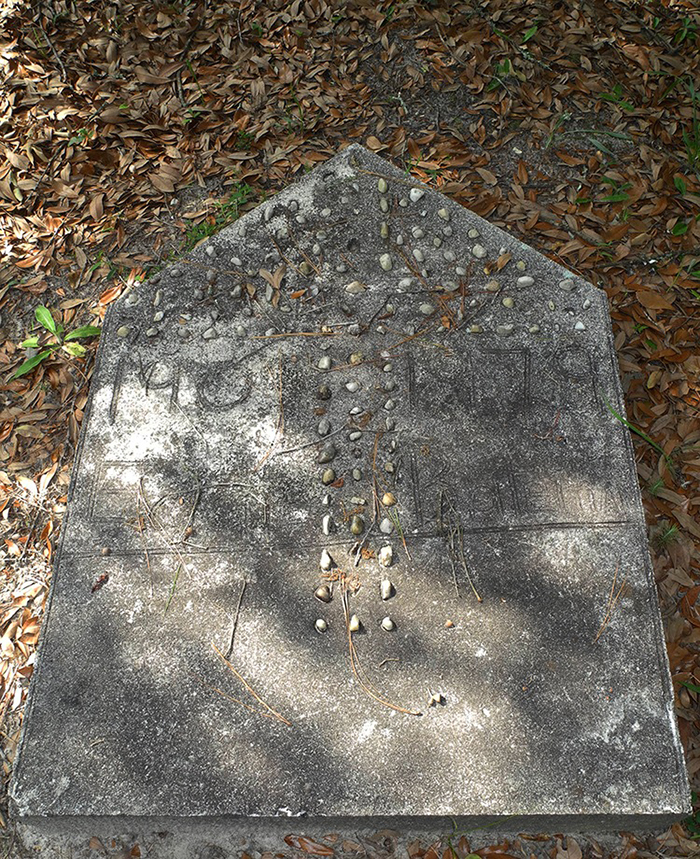
Wallace Cemetery, near Andrews, Williamsburg County, South Carolina. © Sarah Bryan

Wallace Cemetery, near Andrews, Williamsburg County, South Carolina. © Sarah Bryan
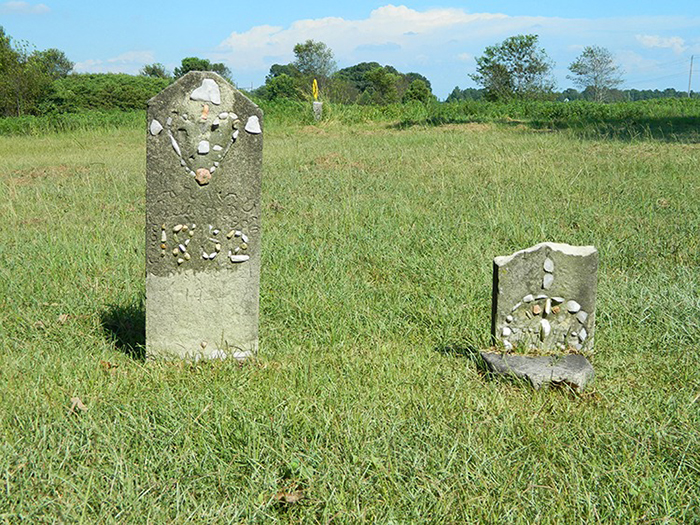
Scottish Heritage (Sutherland) Cemetery, East Laurinburg, Scotland County, North Carolina. © Sarah Bryan
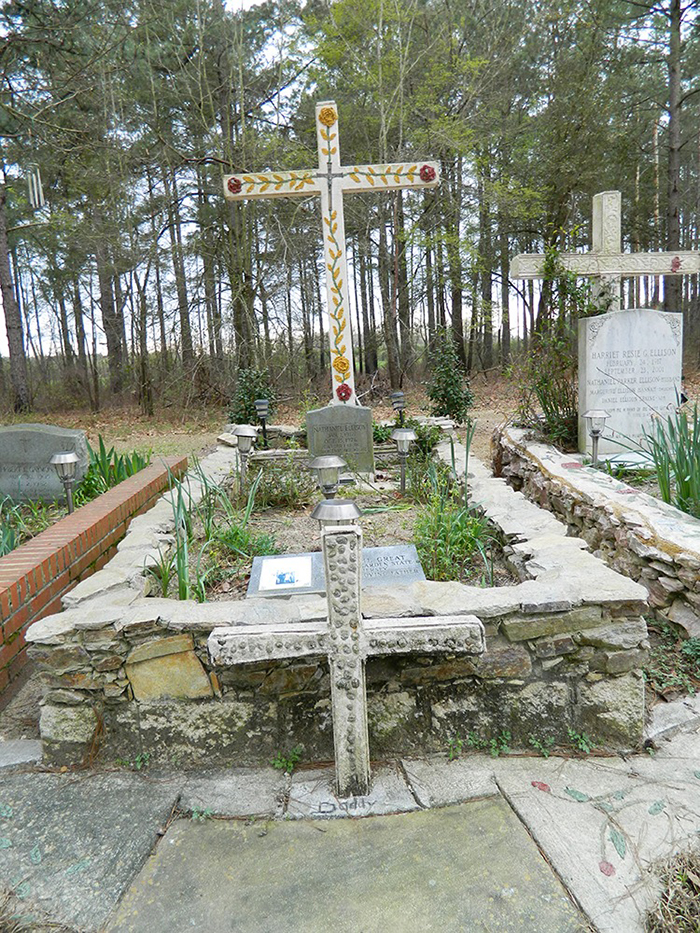
St. Mark Baptist Church in Pinewood, S.C. © Sarah Bryan
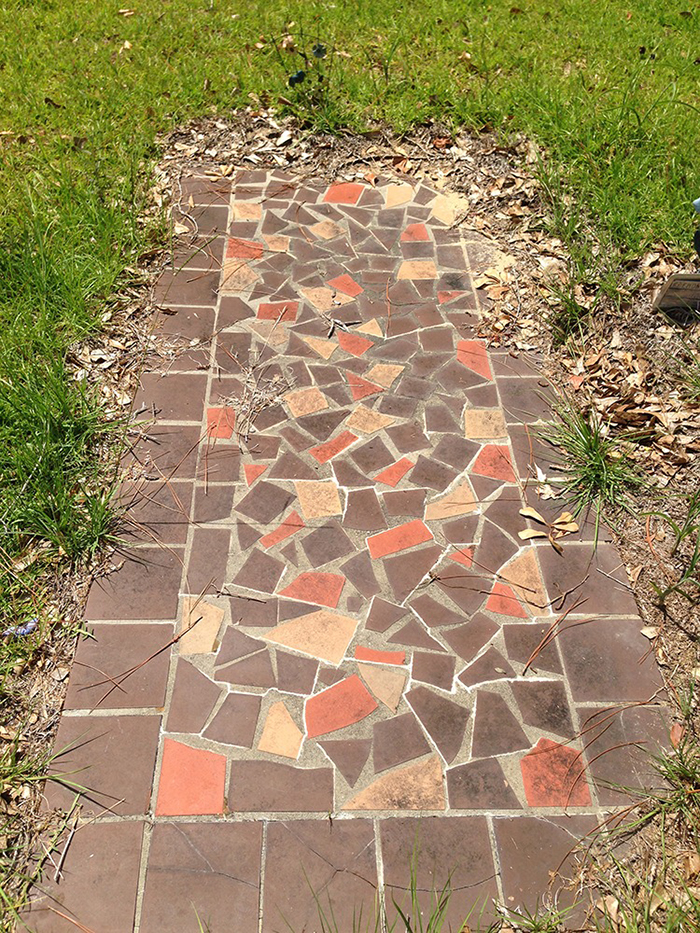
Route 41, Marion, Marion County, South Carolina. © Sarah Bryan
While that post on Folk Funeria focused on the typography of Southern gravestones, this post is focused on unusual gravestones that have been embellished with rocks, marbles, glass, pottery shards, and seashells. Some belive that the decoration of a grave with detritus is symbolic of the body destroyed by death. Others that the materials safeguard the grave.
In the United States, traditions such as these are usually associated with African-American burial sites, where the tradition of gravestone decoration can be traced to various African tribal burial customs. The placement, for example, of shells is possibly a reference to the BaKongo belief that a seashell might be a vessel of immortality. The use of reflective materials like glass and mirrors were sometimes used to represent the mirror image of life in death. The practice made its way to America in the colonial era, introduced by slaves, and though many of these customs have been lost to time and no longer are practiced, it continued in some places well into the second half of the twentieth century.
If you would like to learn more about African-American burial practices, John Vlach's book The Afro-American Tradition in Decorative Arts goes into quite some detail. Good online primers on the subject can be found here ;and here.

Unknown artist, A Congo chieftain’s grave, ca. 1830, West Central Africa.

Mt. Zion AME Zion Church/Flea Hill Church, Eastover, Cumberland County, North Carolina. This gravestone and the two below are typical of whimsical markers made by Issiah McEachin, an African-American gravestone maker. © Sarah Bryan

Mt. Zion AME Zion Church/Flea Hill Church, Eastover, Cumberland County, North Carolina. © Sarah Bryan
 Mt. Zion AME Zion Church/Flea Hill Church, Eastover, Cumberland County, North Carolina. © Sarah Bryan
Mt. Zion AME Zion Church/Flea Hill Church, Eastover, Cumberland County, North Carolina. © Sarah Bryan
Wallace Cemetery, near Andrews, Williamsburg County, South Carolina. © Sarah Bryan

Wallace Cemetery, near Andrews, Williamsburg County, South Carolina. © Sarah Bryan

Scottish Heritage (Sutherland) Cemetery, East Laurinburg, Scotland County, North Carolina. © Sarah Bryan

St. Mark Baptist Church in Pinewood, S.C. © Sarah Bryan

Route 41, Marion, Marion County, South Carolina. © Sarah Bryan

